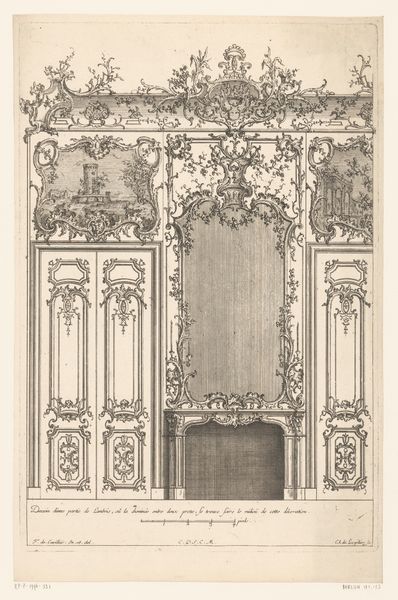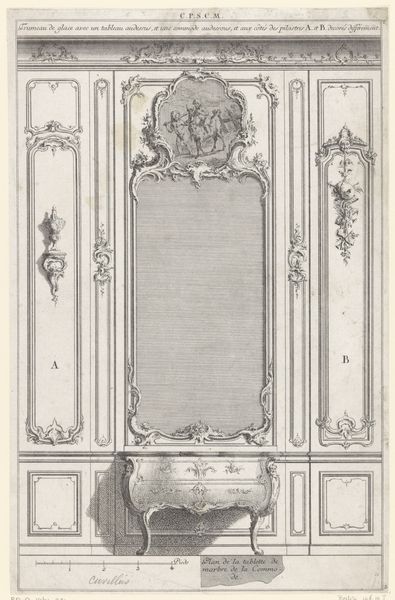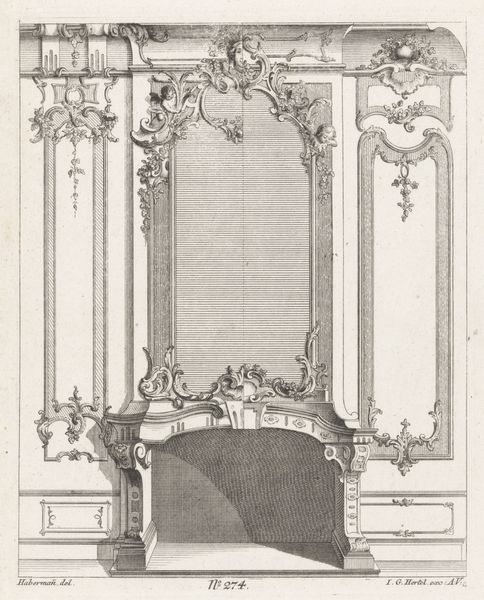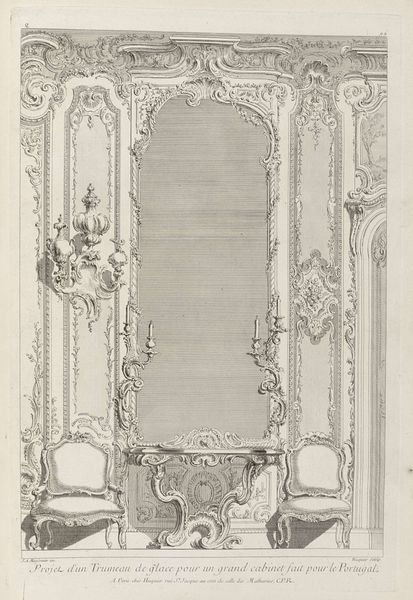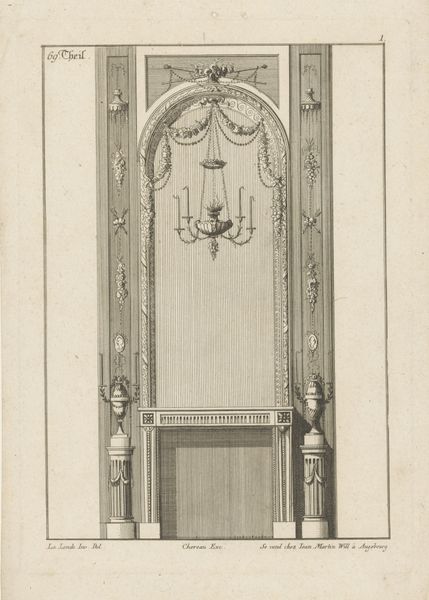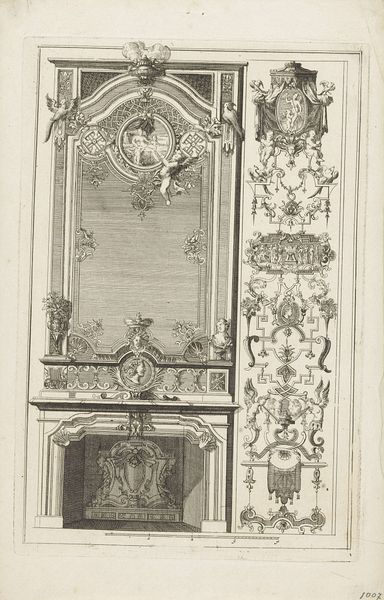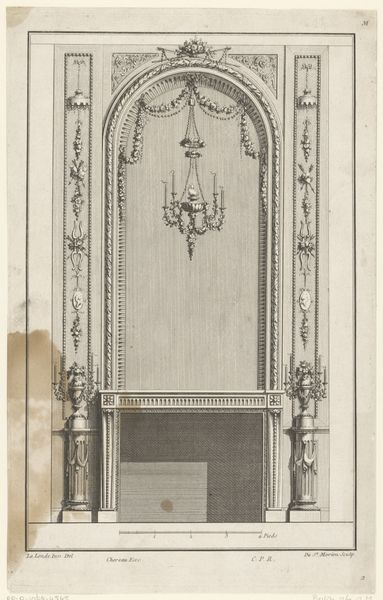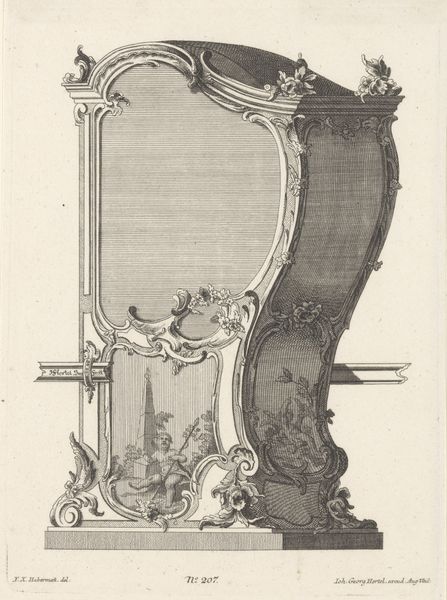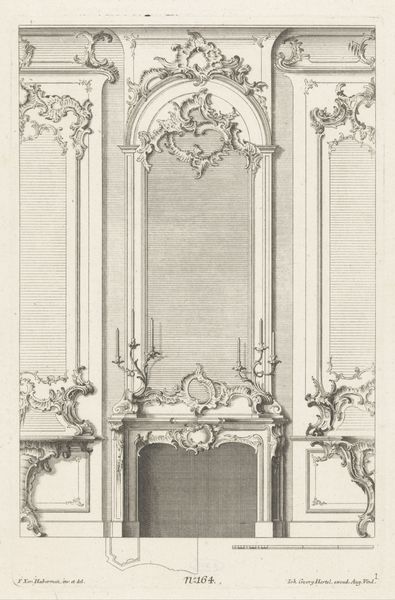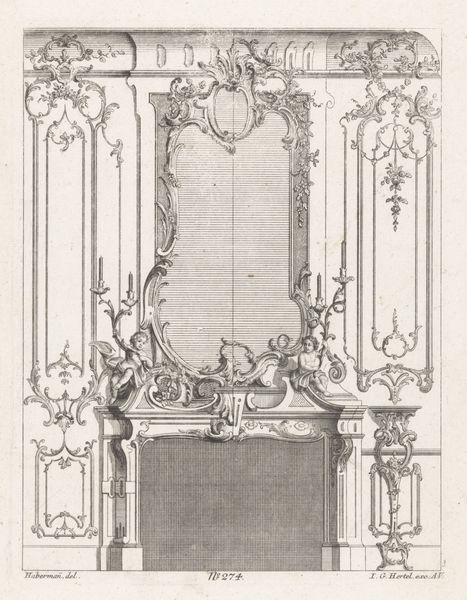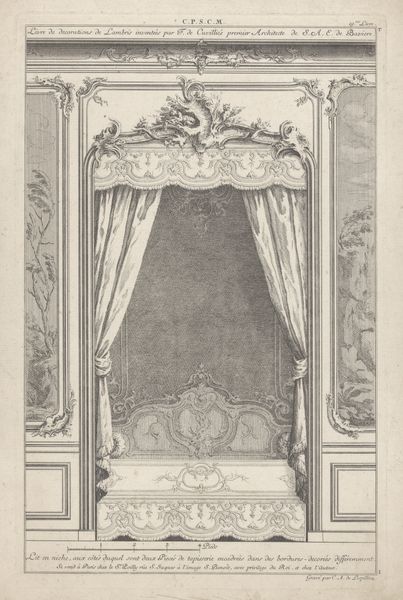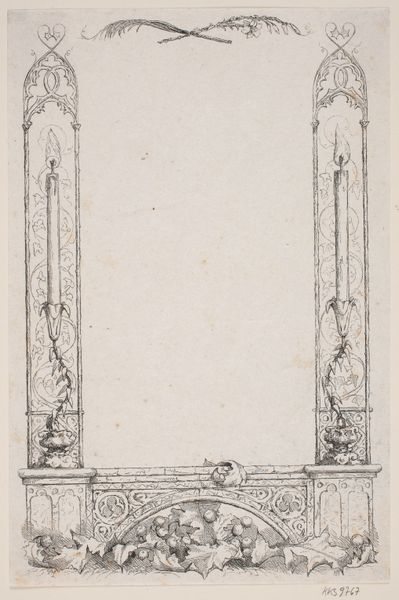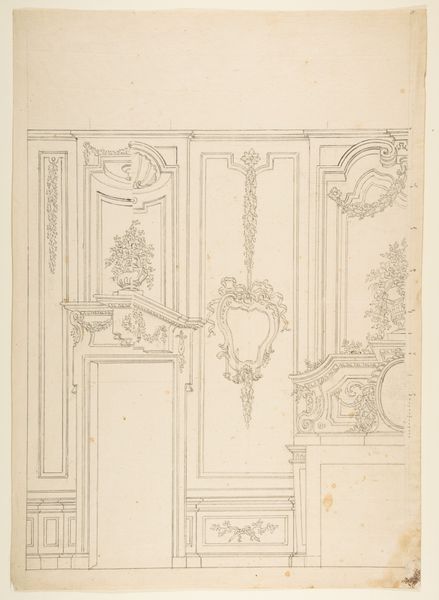
drawing, ink, engraving, architecture
#
drawing
#
baroque
#
form
#
ink
#
line
#
decorative-art
#
engraving
#
architecture
Dimensions: height 349 mm, width 241 mm
Copyright: Rijks Museum: Open Domain
Curator: Let's have a look at this detailed drawing, "Schouw en panelen," a design for a mantelpiece and wall paneling created around 1738 by Carl Albert von Lespilliez. It’s an intricate work rendered in ink and engraving. What's your immediate sense of it? Editor: Wow, it's a bit overwhelming, honestly. There's such a dense accumulation of ornament! I get a sense of theatricality, almost like a stage set rather than an intimate domestic space. All those swirling lines make my eyes dart all over the surface. Curator: You’ve touched on something key. The Baroque loved the drama and dynamism. Lespilliez captures that spirit beautifully in his articulation of form. Look closely at the symmetry—or the suggestion of it, because the Baroque loved to play with breaking symmetry just when you think you’ve pinned it down. How do you see the function of the symmetry at play here? Editor: It's like the structure tries to create a sense of order with these repeated elements but the details constantly rebel. See those cartouches and leafy garlands? The asymmetrical arrangements make the piece feel alive. It's like nature is trying to burst free from the constraints of architecture. Maybe it tells us something about nature as decor, but not a very natural decor at all. Curator: Precisely! There is certainly something else bubbling under the surface. Those cherubic figures almost look imprisoned within the ornamentation, don't they? Almost suffocated by the sheer weight of all that gilded detail! But that contrast between delicate form and overwhelming mass is core to the tension in so much baroque and rococo art. Editor: So, is Lespilliez saying something about the way we control—or fail to control—nature or ourselves? That the more we try to refine something the more chaotic it actually gets? Curator: Or perhaps that there is beauty to be found in orchestrated chaos, or freedom in being confined. That the richest life can be one that acknowledges that duality, instead of just plumping for one extreme or another. Food for thought, I reckon! Editor: Yes indeed! Thanks, that's a point that'll linger, like the ghost of candlelight dancing across those fanciful panels. I am seeing new subtleties now.
Comments
No comments
Be the first to comment and join the conversation on the ultimate creative platform.
